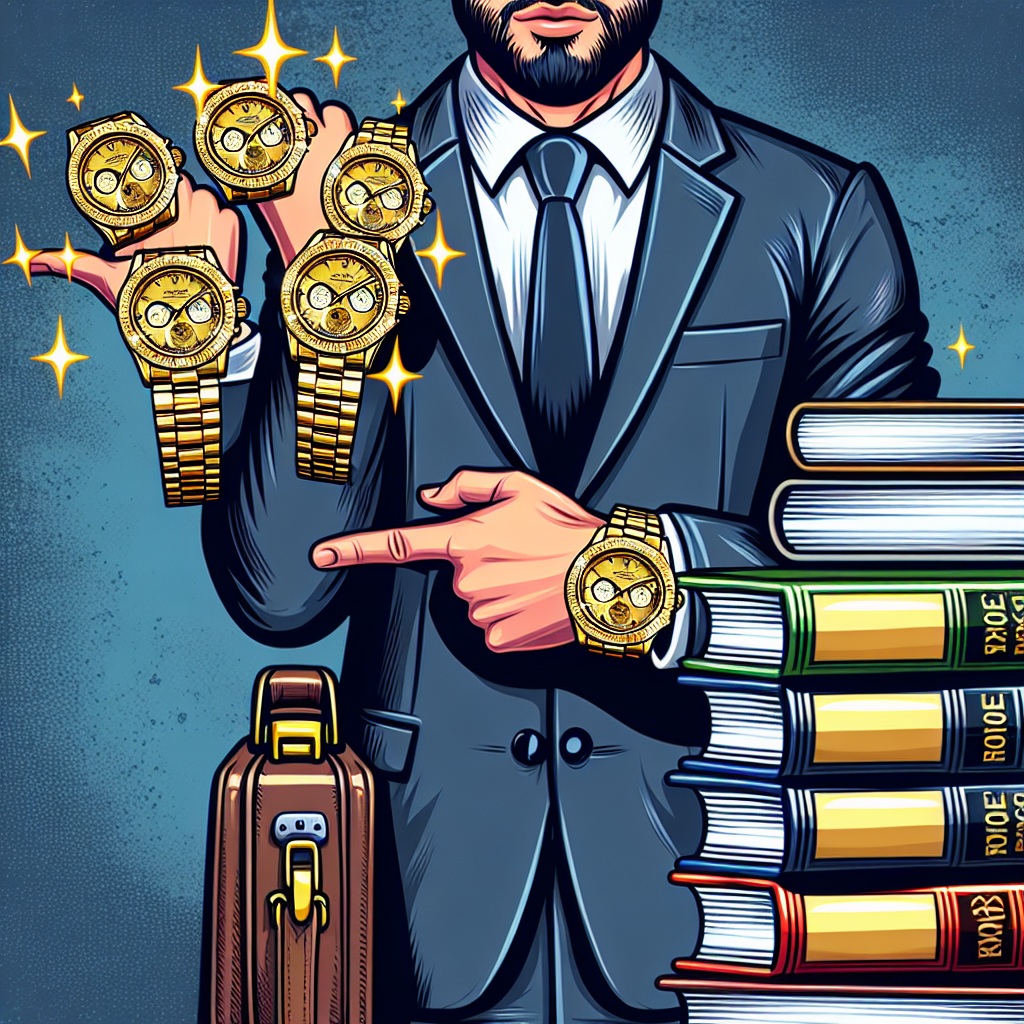Renowned American businessman Robert Kiyosaki, well-known to Chinese audiences for his bestselling book “Rich Dad, Poor Dad,” recently revealed on his self-media channel that he owns four Rolex Daytona gold watches. While many may view spending tens of thousands of dollars on a watch as a waste of money, Kiyosaki argues that this mentality is characteristic of poor thinking and a contributing factor to why people remain financially poor.
Kiyosaki explains that purchasing a gold watch is an investment as it contains gold, which appreciates over time. In contrast, a few hundred dollars spent on an Apple watch would only depreciate in value. This disparity highlights the fundamental difference in mindset between the rich and the poor. While the poor might perceive snagging a bargain as a savvy move, continuously thinking this way can hinder one’s path to wealth.
For quite some time, Kiyosaki has expressed his fondness for gold and silver, considering them as real money sourced from a higher power, while fiat currency issued by governments is deemed as “fake money” devoid of intrinsic value. Consequently, rather than saving money, Kiyosaki chooses to stockpile gold, silver, and invest in gold and silver mines, oil wells, and real estate. Purchasing gold watches, therefore, translates to wearing one’s assets on their wrist.
In light of the record-high national debt in the United States, with the government resorting to continuous money printing as a solution, Kiyosaki expresses concerns over the impact. He highlights the issue that printing money leads to the rich getting richer while the poor and middle class become increasingly impoverished.
Referring to Gresham’s Law in economics, which states that bad money drives out good money, Kiyosaki elucidates how the constant printing of paper currency erodes the presence of gold and silver. He particularly points out the 1971 decision by President Nixon to delink the US dollar from gold, stripping it of its intrinsic value and transforming it into fiat currency backed solely by national credit.
Kiyosaki stresses that faced with a choice between a $10 bill and a 50 cent silver coin, many opt for the bill, whereas the wise and wealthy choose the silver coin as they recognize it as genuine money and good currency. The wealthy accumulate good currency and valuable assets, leading to their increasing wealth through appreciating assets. Meanwhile, essential items like eggs, food, and other necessities also see price hikes, thus exacerbating the struggle for those clinging to constantly depreciating fiat money.
Repeatedly advocating on his self-media platform that paper money is essentially worthless, Kiyosaki favors using debt, or fake money, to purchase real estate, anticipating that these assets will appreciate while currency debts devalue over time. He firmly believes that failure to discern between real money and fake money leads to inevitable losses for those who stash paper currency.
Reflecting on his father’s experience of being educated but trapped by poor thinking, leading to a life of poverty, Kiyosaki shares that his father’s preference for cheap items over valuable assets had a considerable influence on his financial situation. Therefore, he emphasizes the importance of distinguishing between real and fake money and training oneself to think like the wealthy to achieve financial success.

